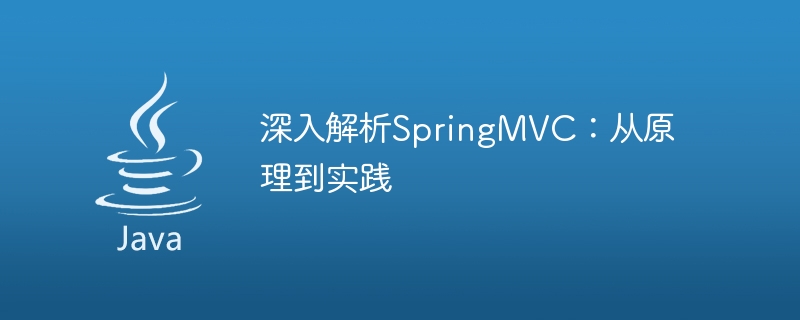

In-depth analysis of SpringMVC: from principle to practice
Introduction:
SpringMVC is one of the most popular MVC frameworks in JavaWeb development, which provides a structure Clear, flexible and scalable development model. This article will gradually analyze the core concepts and working mechanisms of SpringMVC from principle to practice, and provide specific code examples.
1. SpringMVC principles and core concepts
1.1 MVC pattern
MVC pattern is a design pattern commonly used in software development. The application is divided into Model, View and Controller (Controller) three parts. Models are used to encapsulate data and business logic, views are used to display data, and controllers are used to handle user requests and call models and views.
1.2 SpringMVC framework
SpringMVC framework is a Web framework based on the MVC pattern, which receives and distributes requests through DispatcherServlet. The core principles include HandlerMapping, HandlerAdapter, ViewResolver and other components.
2. SpringMVC workflow
2.1 Request process
2.2 Detailed explanation of key components
2.2.1 HandlerMapping
HandlerMapping maps the request URL to the corresponding Controller and method. Commonly used HandlerMapping implementation classes include BeanNameUrlHandlerMapping, RequestMappingHandlerMapping, etc.
2.2.2 HandlerAdapter
HandlerAdapter is responsible for mapping requests to Controller methods and executing methods. Commonly used HandlerAdapter implementation classes include SimpleControllerHandlerAdapter, RequestMappingHandlerAdapter, etc.
2.2.3 ViewResolver
ViewResolver is responsible for resolving logical view names into specific views. Commonly used ViewResolver implementation classes include InternalResourceViewResolver, VelocityViewResolver, etc.
3. SpringMVC practice
The following uses a specific example to demonstrate the practice of SpringMVC.
3.1 Configure web.xml
Configure DispatcherServlet in the web.xml file and set it to load the SpringMVC configuration file.
3.2 Configure SpringMVC configuration file
In the SpringMVC configuration file, define the configuration of key components such as scanners, processor mappers, processing adapters, and view resolvers.
3.3 Write Controller
Write the Controller class, and add the @RequestMapping annotation to define the requested URL and request method.
3.4 Write business logic
Write relevant business logic and combine it with the controller to process the request.
3.5 Write the view layer
Write the view layer template, such as JSP file, to display data.
3.6 Running and debugging
Deploy the application to the server, start the server, and send requests for access through the browser. The application can be debugged through debugging tools, such as the debugging function in the IDE.
Conclusion:
This article analyzes the core concepts and workflow of SpringMVC in detail from the principles to practice of SpringMVC, and provides specific code examples. By deeply understanding SpringMVC and practicing the corresponding code, you can better apply the SpringMVC framework for JavaWeb development.
The above is the detailed content of An in-depth exploration of SpringMVC: a complete analysis of theory and practice. For more information, please follow other related articles on the PHP Chinese website!




